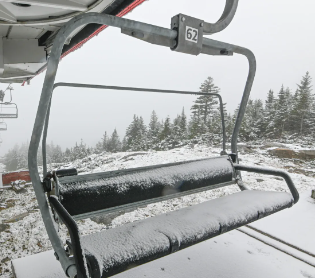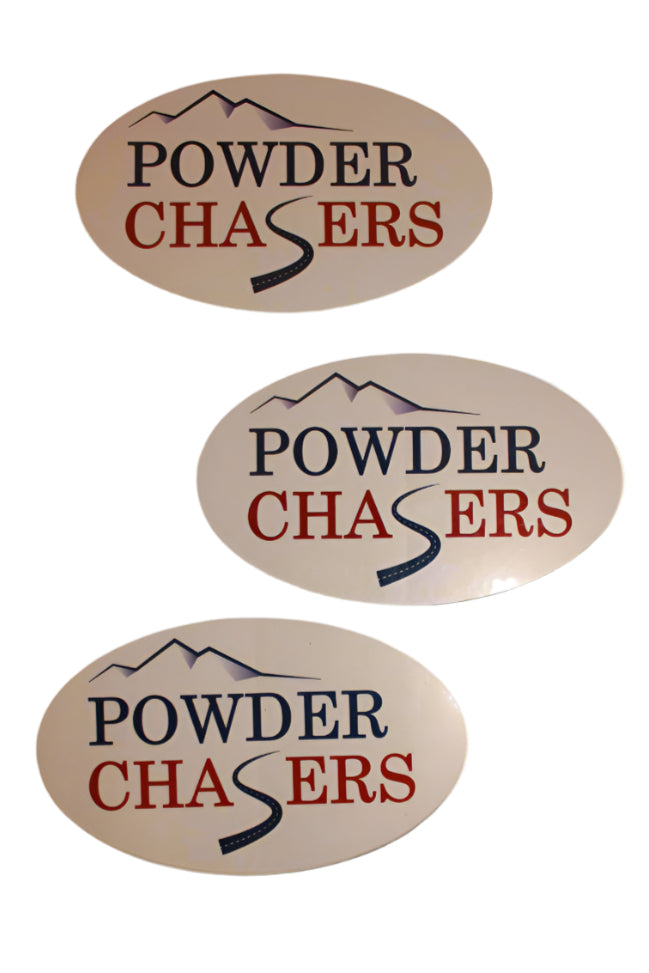High-level Forecast Summary
A series of active weather systems will bring multiple rounds of snow across the western United States over the upcoming week. The Pacific Northwest and California regions will see prolonged storm cycles with significant multi-day snowfall in the mountains, while the Intermountain West, Utah, and Colorado regions will experience a sequence of smaller, distinct storms. These systems will deliver substantial accumulations to higher elevations, improving conditions for powder enthusiasts. Meanwhile, lower valleys will see occasional mixed precipitation or brief breaks between storms. Each region will feature periods of gusty winds and rising snow levels at times, followed by lower snow levels and cooler conditions behind each wave. Overall, a dynamic pattern will favor frequent snowfall over the next several days, with the deepest accumulations expected in the Pacific Northwest and northern California mountains.
NOTE: Please support Powderchasers with a donation, Merchandise purchase such as a hat or stickers, or sign up for our custom Concierge Powder Forecast Package where we provide 1:1 phone and email support to get you to the deepest locations possible. Outside Magazine listed Powderchasers in the top 3 sites with the custom concierge program. These ways to support us will allow us to keep you chasing the deepest snow all winter! It's time to start trip planning and chasing pow!
Pacific Northwest Region

A prolonged and complex storm cycle will impact the Pacific Northwest’s mountain ranges through much of the forecast period. Beginning Wednesday night (December 11) and continuing straight through Friday (December 20), multiple waves of moisture will bring continuous rounds of snowfall to the Cascades. Snow levels will start relatively low and remain favorable for mountain accumulations, though they may fluctuate slightly with each surge of moisture. Overall, expect deep, multi-day snowfall totals.
Strong winds at times will accompany these storms, particularly along exposed ridgelines and passes. This will lead to periods of blowing and drifting snow in the higher terrain, potentially reducing visibility and creating challenging travel conditions. Temperatures in the mountains will remain seasonal or slightly cooler, helping maintain light to moderate density powder.
While snowfall will be nearly continuous, some resorts may see short lulls, especially toward the middle of the event. Even so, expect regular top-offs of fresh snow each day, resulting in outstanding conditions for powder hounds. As the cycle continues through the middle of next week, new accumulations will keep building. Overall, it’s an extended window of good opportunities for powder turns, though always check conditions, as avalanche risk may increase with so much ongoing snowfall.
Storm-by-Storm Resort Snowfall Totals (by region):
Combined Extended Storm: Wednesday night (December 11)-Friday (December 20)
- Mt Baker: 20-30 inches
- Timberline: 24-28 inches
- Stevens Pass: 21-28inches
- Snoqualmie Pass: 17-26 inches
- Crystal Mountain: 17-28 inches
- Mt Bachelor: 16-29 inches
- Whistler: 20-35 inches
California Region

In California’s Sierra Nevada, a pair of major systems will effectively merge into one extended storm cycle, bringing substantial snowfall to the higher elevations. Starting Thursday (December 12) and lasting through Tuesday night (December 17), periods of heavy snow will blanket the region. Early on, lighter snowfall Thursday will be followed by a more significant and warmer wave from late Friday into Monday, and then a minor top-off late Tuesday night. Many resorts will see continuous or near-continuous snowfall, resulting in deep and refreshed powder conditions throughout this six-day stretch.
Snow levels will fluctuate but generally remain in a favorable range for mountain snow. The heaviest accumulations are expected at the higher elevations, where multiple feet of new snow are likely. Temperatures will trend near or slightly below seasonal norms, keeping snowfall densities manageable for excellent skiing and riding. Gusty winds will occasionally impact ridgetops and exposed areas, potentially affecting lift operations at times especially on Saturday.
While some resorts experience a break between storms, the majority see a nearly unbroken sequence of snowfall. Expect improving and deepening conditions each day as the mountains are continually resurfaced. Travel in the high country may become difficult during peak snowfall rates. Once the pattern settles after Tuesday night, a considerable snowpack gain is anticipated.
Storm-by-Storm Resort Snowfall Totals (by region, storms combined):
Combined Major System: Thursday (12/12)-Tuesday night (12/17)
- Kirkwood: 12-24inches
- Sugar Bowl: 15-23 inches
- Palisades Tahoe: 15-25 inches
- Mammoth (3 storms combined): 9-18 inches
- Northstar (3 storms combined): 9-19 inches
- Heavenly (3 storms combined): 7-16 inches
- Mt Rose (2 storms combined): 8-15 inches
Intermountain West (ID/MT/WY)
The Intermountain West will experience multiple, shorter-duration storm events rather than one long, continuous cycle. Light initial snowfall in some areas Thursday and Friday will give way to a stronger system arriving over the weekend. This will bring moderate accumulations to the favored mountain ranges, including places like Selkirk Powder in northern Idaho. Jackson Hole and Sun Valley will also see multiple rounds, with a larger event Thursday night through Sunday night followed by smaller refreshes early next week.
Snow levels will remain relatively low, ensuring even mid-elevation resorts receive snowfall rather than rain. Intervals of gusty winds are expected, especially with the stronger weekend system, potentially impacting travel over passes. As each disturbance moves through, expect conditions to alternate between fresh powder surfaces and short breaks. The valleys may see brief periods of light snow or mixed precipitation, but the best accumulations will remain in the higher terrain.
Due to the series of smaller storms, timing your visit will be key. The heaviest snow for some resorts (like Schweitzer and Grand Targhee) will span several days, while others will see distinct lulls between snow events. Skiers and riders looking for soft turns should find multiple opportunities through early next week. Keep an eye on day-to-day changes in snow conditions due to these staggered storms.
Storm-by-Storm Resort Snowfall Totals (by region):
First Major Extended Storm (covering all primary accumulations)
- Selkirk Powder: 12-18 inches (Thu 12/12 Night - Thu 12/19 Night)
- Grand Targhee: 12-16 inches (Thu 12/12 Night - Tue 12/17 Night)
- Jackson Hole (2 storms combined): 8-15 inches + 3-6 inches = 11-21 inches total (Thu 12/12 Night - Tue 12/17 Night)
- Sun Valley (major weekend storm + small refreshes): 9-14 inches + 0-1 + 0-1 = 9-19 inches (Sat 12/14 Day - Tue 12/17 Night)
- Bogus Basin (2 storms): 0-1 inches (Thu 12/12 Day), then 12-21 inches (Fri 12/13 Night - Tue 12/17 Night)
- Big Sky (2 storms): 2-5 inches (Sat 12/14 Night - Sun 12/15 Night), then 2-5 inches (Mon 12/16 Night - Tue 12/17 Night) total 4-10 inches combined
- Whitefish Mountain (3 storms): 0-1 inches (Sat 12/14), 1-3 inches (Sun 12/15), then 2-5 inches extended (Mon 12/16 Night - Thu 12/19 Night) total approx. 3-9 inches combined
- Bridger Bowl (3 storms): 1-3 inches (Sun 12/15), 1-2 inches (Tue 12/17), 0-1 inches (Thu 12/19) total 2-6 inches combined
(For the Intermountain West, the storms are quite staggered and complex. The above listing provides total ranges by adding the individual storms together for each resort. The largest, most impactful time frame is roughly Thursday (12/12) night through next Wednesday (12/19), covering all waves.)

Utah Region

Utah’s mountains will see multiple, moderate snow events rather than a single prolonged storm. The first disturbance arrives Thursday night (December 12) and continues into Friday night (December 13), bringing light to moderate snowfall primarily to the northern resorts such as Alta/Snowbird and Powder Mountain. Another round of heavier snowfall will roll in Saturday night (December 14) through Sunday night (December 15), stacking more meaningful accumulations in the Cottonwoods and surrounding areas.
While there may be brief breaks between storms, overall conditions will improve steadily through the weekend. A third, smaller system is anticipated around Monday night (December 16) into Tuesday (December 17), adding a few more inches. Snow levels will remain relatively low throughout, ensuring all resorts see snow rather than rain. Occasional gusty winds at higher elevations will accompany each system, but temperatures look favorable for quality powder formation.
By early next week, resorts in Northern Utah, especially those known for deep powder, will have seen multiple rounds of fresh snowfall. Central and Southern Utah’s Eagle Point should also pick up light to moderate snowfall totals spread over several days. Overall, it’s a great stretch for skiing and riding, as periodic refreshes should keep conditions soft and fun.
Storm-by-Storm Resort Snowfall Totals (by region):
First Storm: Thursday (12/12 Night)-Friday night (12/13)
- Alta/Snowbird: 3-7 inches
- Solitude/Brighton: 3-6 inches
- Powder Mountain: 2-5 inches
- Park City/Deer Valley: 1-4 inches
- Eagle Point: 1-3 inches
Second Storm: Saturday night (12/14)-Sunday night (12/15)
- Alta/Snowbird: Additional 7-13 inches
- Solitude/Brighton: Additional 7-12 inches
- Powder Mountain: Additional 7-14 inches
- Park City/Deer Valley: Additional 5-9 inches
- Eagle Point: Additional 1-4 inches
Third Storm: Monday night (12/16)-Tuesday night (12/17)
- Alta/Snowbird: Additional 2-5 inches
- Solitude/Brighton: Additional 2-4 inches
- Powder Mountain: Additional 2-5 inches
- Park City/Deer Valley: Additional 1-3 inches
- Eagle Point: Additional 0-1 inches
Colorado Region

Colorado will see several shorter-duration storm events delivering light to moderate snowfall across the state’s mountain resorts. The first wave arrives Friday (December 13), though totals from this system will remain modest. Another weak system may brush the mountains around Sunday (December 15), again producing limited accumulations. The most notable opportunity for deeper snow comes with a mid-to-late period storm starting Monday night (December 16) and continuing through midweek, delivering more substantial accumulations to many central and northern mountains.
Snow levels will remain on the low side, ensuring valley floors occasionally pick up flakes but keeping significant accumulations confined to the mountains. Temperatures will hover near seasonal averages, producing generally good-quality snow. While no single system appears exceptionally large early on, the cumulative effect of multiple rounds will refresh surface conditions. Resorts in the central and northern mountains, including Vail/Beaver Creek and Steamboat, stand to gain the most by mid-next week.
Winds will kick up around each storm’s arrival, potentially impacting travel over high passes. The best periods to find fresh powder on the slopes will be after the Monday night through Wednesday event. Prior to that, look for modest top-ups and generally decent conditions.
Storm-by-Storm Resort Snowfall Totals (by region):
Friday (12/13 Day - Friday night (12/13))
- Vail/Beaver Creek: 1-3 inches
- Snowmass: 1-3 inches
- Winter Park: 1-2 inches
- Copper Mountain/Breckenridge: 0-1 inches
- Telluride: 1-2 inches
- Monarch: 0-1 inches
- Wolf Creek: 0-1 inches
- Steamboat: 2-4 inches
- Crested Butte: 1-3 inches
- Loveland/Arapahoe Basin: 0-1 inches
Sunday (12/15 Day - Sunday night (12/15))
- Vail/Beaver Creek: 0-2 inches
- Snowmass: 1-3 inches
- Winter Park: 0-2 inches
- Wolf Creek: 0-1 inches
- Copper Mountain/Breckenridge: 0-1 inches
- Steamboat: 5-10 inches (notable for this system)
- Crested Butte: 1-3 inches
Monday night (12/16)-Wednesday night (12/18)
- Vail/Beaver Creek: 3-6 inches
- Snowmass: 2-5 inches
- Winter Park: 3-5 inches
- Copper Mountain/Breckenridge: 2-4 inches
- Telluride: 2-5 inches
- Monarch: 1-3 inches
- Wolf Creek: 0-2 inches
- Steamboat: 5-10 inches
- Crested Butte: 1-3 inches
- Loveland/Arapahoe Basin: 2-4 inches
(For Thursday night (12/19) minor add-ons of 0-1 inch are noted at a few resorts.)
This forecast provides the anticipated snowfall totals and timing by region and storm. Conditions will evolve daily as each system passes, so always check the latest updates and consider changing weather, travel conditions, and mountain safety before heading out.



























